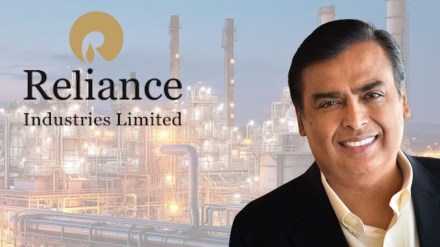Reliance Industries, India’s largest buyer of Russian oil as per a Reuters report, has warned that geopolitical tension and tariff related uncertainty could disrupt global trade flows and upset the demand-supply balance in the energy sector.
In its annual report for the year ending March 2025, Reliance said global crude oil prices remained volatile due to geopolitical tensions in the Middle East, shifting shipping routes, OPEC and non-OPEC output decisions, new capacity additions, changing sanctions and tariffs, and the pace of China’s economic recovery.
The company did not give details about specific tariffs in its report. However, this comes at a time when US President Donald Trump has imposed an additional 25 per cent tariff on Indian imports on Wednesday. The move aims to penalise India for continuing energy ties with Russia and comes on top of existing trade levies.
Russia remains top oil supplier to Reliance in 2025
According to Reuters, Russia supplied about 35 per cent of India’s oil in the first half of 2025, ahead of Iraq, Saudi Arabia, and the UAE. Last year, Russian oil giant Rosneft signed a deal to supply Reliance with nearly 500,000 barrels of crude per day — the biggest-ever energy agreement between the two nations.
Key challenges for the refining business
Reliance shipped an average of 2.83 million barrels of diesel and 1.5 million barrels of jet fuel per month to Europe in the first seven months of this year, according to LSEG ship tracking data cited by Reuters.
“If we cave under pressure, we risk losing access to cheaper Russian crude, which could squeeze refining margins. That’s a risk for Reliance and oil marketing companies,” Pramod Gubbi, co-founder at portfolio manager Marcellus Investment Managers, said to Reuters referring to additional US tariffs.
Reliance Industries sees pressure from global refining boom
Reliance annual report added that The market faced more pressure this year as new refining units in Nigeria and China kept product prices in check. “New refining capacity in Nigeria and China capped product prices and the Red Sea blockage led to higher freight for shipping our products to Europe. Downstream chemical product prices and margins remained under pressure with significant new capacity additions, especially in China.”
Reliance Industries taps domestic demand to sustain growth
In order to tackle these challenges, Reliance Industries said it has used its access to competitively priced feedstock and flexible product mix to manage price volatility. The company deployed time-chartered vessels, including Suezmax and VLCC carriers, to ship products into international markets and “maximise net-backs” by leveraging its global reach.
Nuvama on RIL: New Energy may match O2C segment profitability in 5–7 years
RIL also increased its focus on domestic sales to meet India’s rising demand, which helped sustain operating rates and support profitability.
Reliance Industries is set to conducts its annual general meeting on Aug 29. Brokerage firm Nuvama notes that the conglomerate remains a sector relative outperformer with strong growth visibility across businesses. It also sees the New Energy business emerging as a strong profit driver, with potential to match the profitability of the oil-to-chemicals (O2C) segment within five to seven years.
“RIL’s New Energy rollout can add over 50 per cent to profits and re-rate valuations, much like Jio’s launch did in 2017,” the brokerage said.
Nuvama highlighted that on the O2C front, RIL is expanding its polyester, vinyl and carbon fibre capacities by FY27. In exploration and production, the company plans to drill new wells at the KG-D6 basin by H2CY28 to offset natural declines in output.
